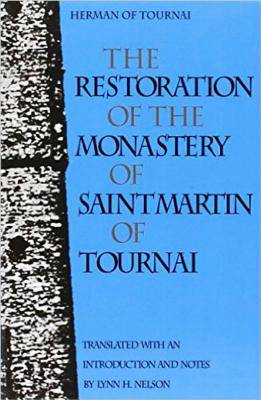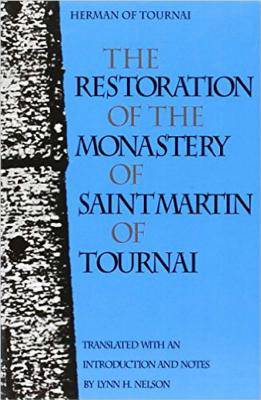
- Retrait gratuit dans votre magasin Club
- 7.000.000 titres dans notre catalogue
- Payer en toute sécurité
- Toujours un magasin près de chez vous
- Retrait gratuit dans votre magasin Club
- 7.000.000 titres dans notre catalogue
- Payer en toute sécurité
- Toujours un magasin près de chez vous
Description
In Flanders in the year 1090, as famine began to spread over the low countries, diseased and dying paupers from near and far crowded into the cathedral of St. Mary of Tournai in hopes of a miraculous cure. When the canons of Tournai ordered that those without hope of survival be dragged outside, they unwittingly set in motion a chain of events that would lead to the restoration of the abandoned monastery of St. Martin of Tournai. Some fifty years later, Herman, a monk of St. Martin's and its one-time abbot, wrote the history of those events in his Restauratio sancti Martini Tornacensis. Now this first English translation offers students and general readers the opportunity to enjoy his entertaining and significant account of the period.
A master storyteller, Herman writes with deceptive simplicity and an eye for the telling detail, and the reader is soon drawn into his world, admiring a scriptorium at work, digging for buried treasure, watching a tragic tournament, opening the tomb of a murdered count, searching for purloined parchments, dining on oats and straw during a famine, listening to King Henry and Archbishop Anselm argue about a Scottish princess, tracing a schoolmaster's erratic path to sainthood. Leading the reader through the courts, bedrooms, cloisters, and kitchens of the twelfth-century renaissance, Herman weaves anecdotes and digressions into an intriguing and suggestive account of the complex personal motives, political undercurrents, and social conflicts that surrounded the establishment of a monastic community just outside of the town of Tournai.This translation penetrates beneath the surface of Herman's account to illuminate some of his hidden meanings. In carefully constructed subtexts, Herman depicts the strife that surrounded the monastic restoration and affords the careful reader an intimate look at the values, attitudes, and social tensions of his time. The translator's introduction provides a context for readers who may be less familiar with the place or period, while a series of appendices offers more extended historical background for some of the central issues in Herman's account. Insightful explanatory notes provide useful background information regarding medieval customs and practices and identify the work's many characters. In addition, genealogical charts trace the often complicated familial relationships of the persons involved.
Lynn H. Nelson is professor of history at the University of Kansas, where he has taught since 1963.Spécifications
Parties prenantes
- Auteur(s) :
- Editeur:
Contenu
- Nombre de pages :
- 248
- Langue:
- Anglais
- Collection :
Caractéristiques
- EAN:
- 9780813208510
- Date de parution :
- 01-04-96
- Format:
- Livre broché
- Format numérique:
- Trade paperback (VS)
- Dimensions :
- 139 mm x 215 mm
- Poids :
- 367 g







